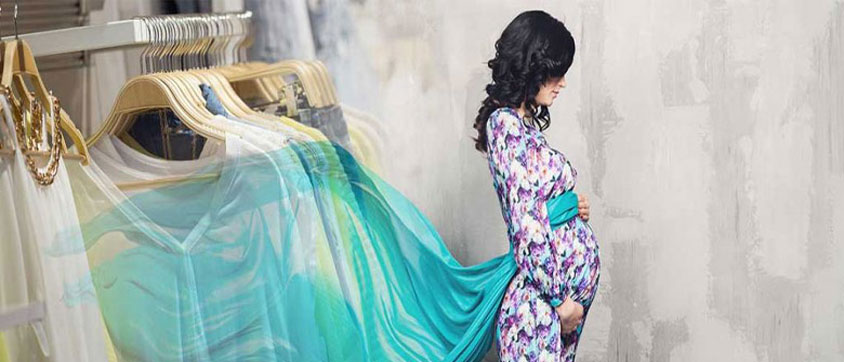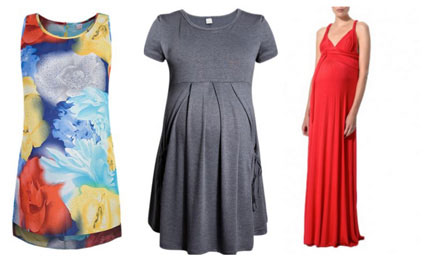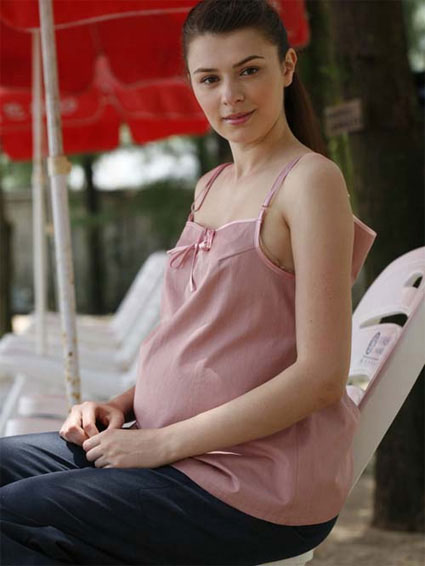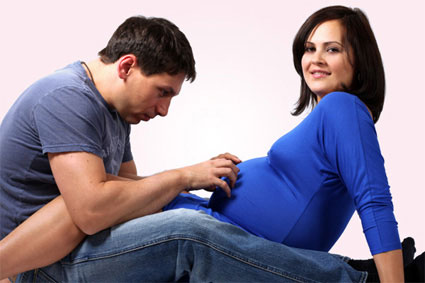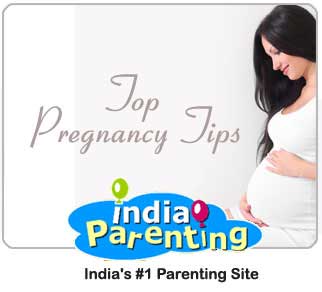As soon as a woman gets pregnant, she starts thinking about the clothes she will need. Most of them are out to buy clothes for themselves. Before you make the final purchase, make sure that
pregnancy outfits (after trials) are comfortable for you and your growing stomach.
The ones that you buy at the
first trimester may not fit you in the second or third trimester. You may consider borrowing a few maternity outfits from your friend or sister as pregnancy outfits are expensive. You need them only for a short period of time, starting from your second trimester until several months after the delivery.
First Trimester
In the first trimester, you do not gain much and also some women do not want to disclose about their pregnancy to others at this point in time. You can continue wearing your old clothes, except for the tight ones. Choose loose fitted clothes that cover your stomach, hips and thighs so that the little gain in these areas do not reveal the secret you want to hide from others.
Second Trimester
This is time you should consider buying
maternity clothes for yourself. However, your pants can still go for a few more weeks. Use a rubber band, loop it around the button hole and then wrap it around the button. This gives you the extra inches needed. You can also buy a belly band (worn around your waist), which holds up your unzipped pant. To hide these, wear a long shirt or top above your pant. But wear such bands only after consulting your doctor. Buy those outfits which can be modified for later stages as per your growth, such as buttons at the sides, T-backs, and wraps.
Third Trimester
In the third trimester, you will start feeling big and wearing clothes might make you feel uncomfortable. You can choose for a variety of maxi or ankle length maternity dresses. You can also opt for maternity tunics with leggings.
Maternity Must-Haves
Have a quick a look at the maternity must-haves.
Bras
Choose a bigger size, comfortable and expandable bra that gives the support needed. Buy a few at a time, as you may need a bigger size at later stages of your pregnancy. Choose cotton fabric to avoid any itching or irritation. Avoid wearing underwire bras as it may put pressure on milk ducts causing complications. Nursing bras should be bought a week before
delivery to ensure the best fit.
Underpants
Buy yourself a bigger size and only 100% cotton underpants that will keep you dry, and prevent from catching any infections. Due to increased vaginal discharge you may want to change them often, so buy a good number of underpants.
Pants and Skirts
Maternity pants and skirts should be made of soft fabric with elastic waistbands (no zip or buttons). You can wear skirts in all your trimesters. You can also choose from under-the-bump (worn on the waist) and over-the-bump (worn high on the waist covering the bump) maternity pants. You can also buy some maternity leggings to match your tunics.
Tops, Shirts, Tunics, Dresses and Wraps
Choose a fabric which does not get itchy, sticky or uncomfortable. Choose a size, usually bigger, to cover your growing stomach.
Dresses (skirts too) allow air to circulate and keep you cool. You can alternately wear a scarf, jacket, cardigan with it to give yourself a different look.
Tops and shirts that fit well over shoulders and arms but fall loosely over your stomach would help you hide the extra gain.
Shoes and sneakers may give you the comfort or maybe sandals with no
heels. You may also need a bigger size to give space for the swollen ankles or feet. Bending over your stomach is not possible, so choose shoes or sandals which have no laces or buckles.
Pregnancy may not mean a whole new wardrobe but at least a few essential clothes to give you the comfort and support. Comfortable fabric, perfect size and well designed clothes are all that you need for your lifetime experience.












